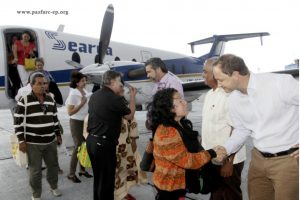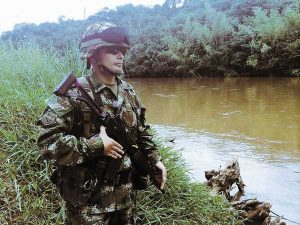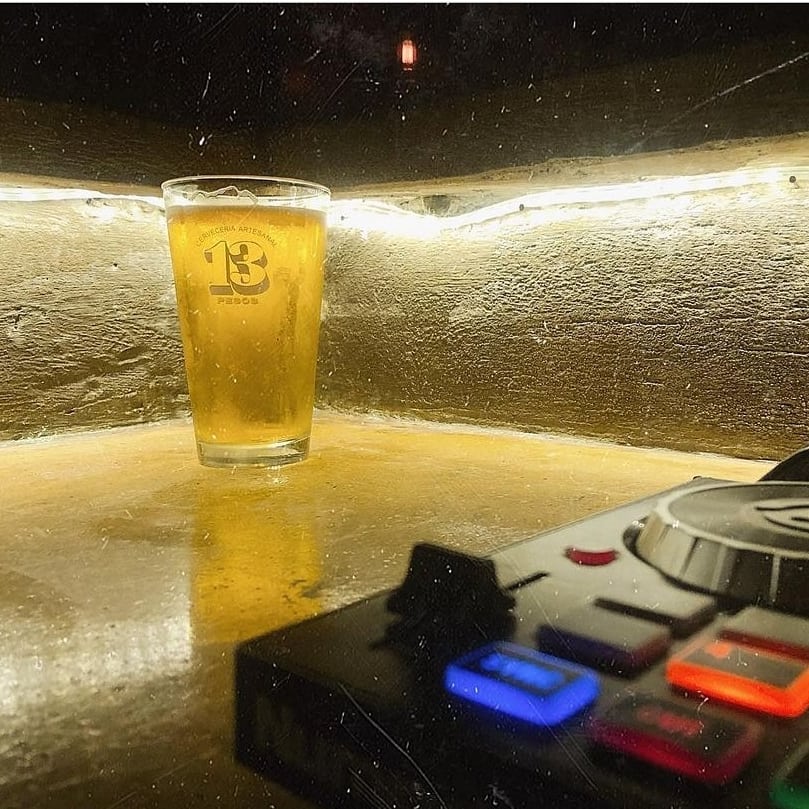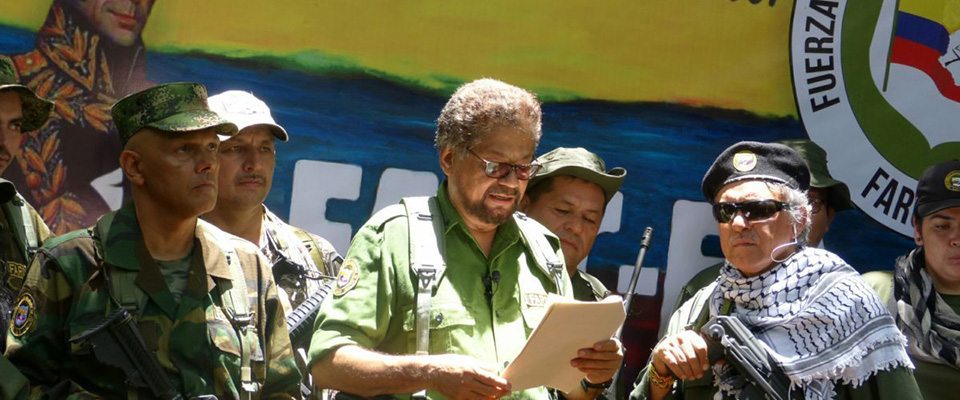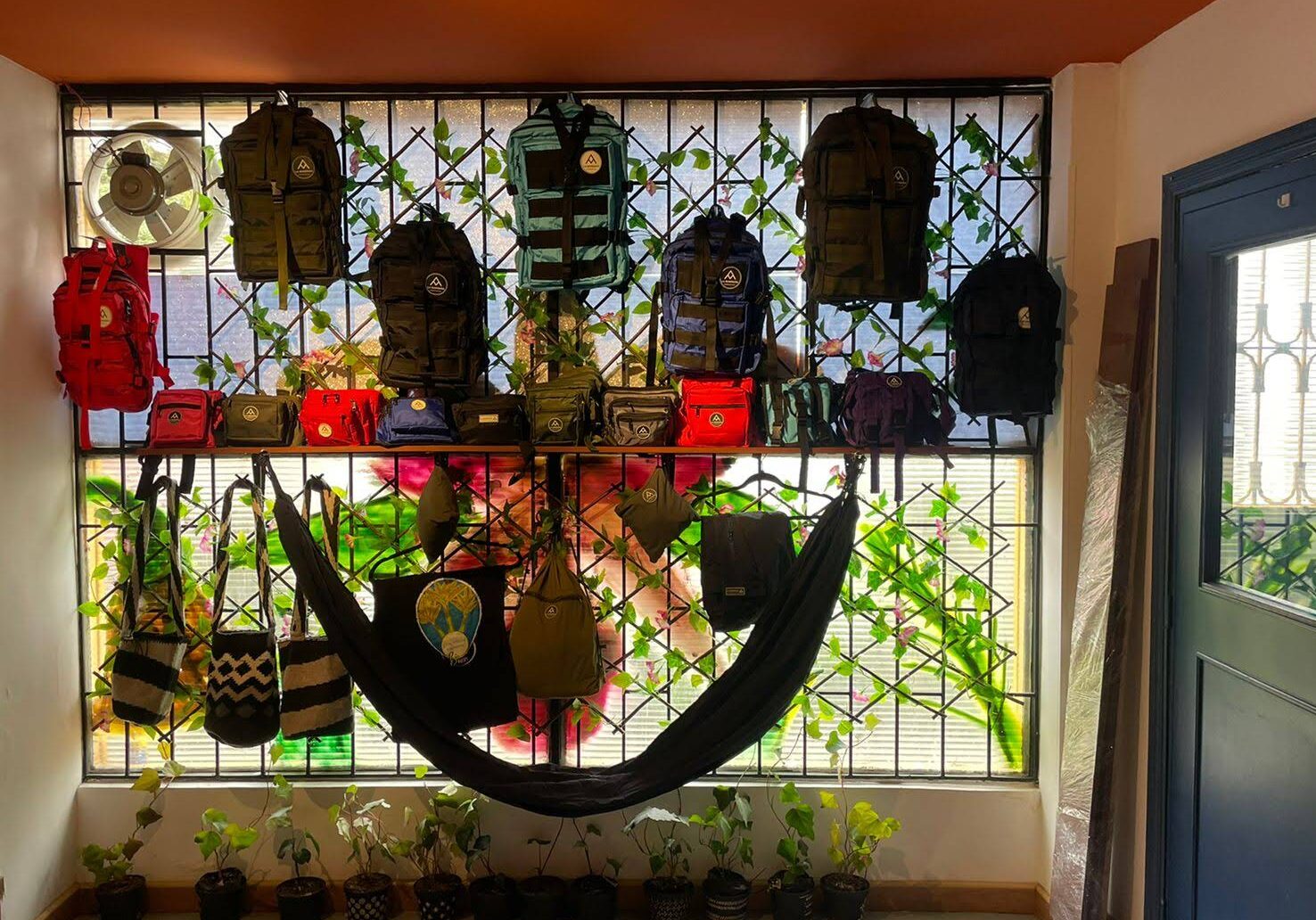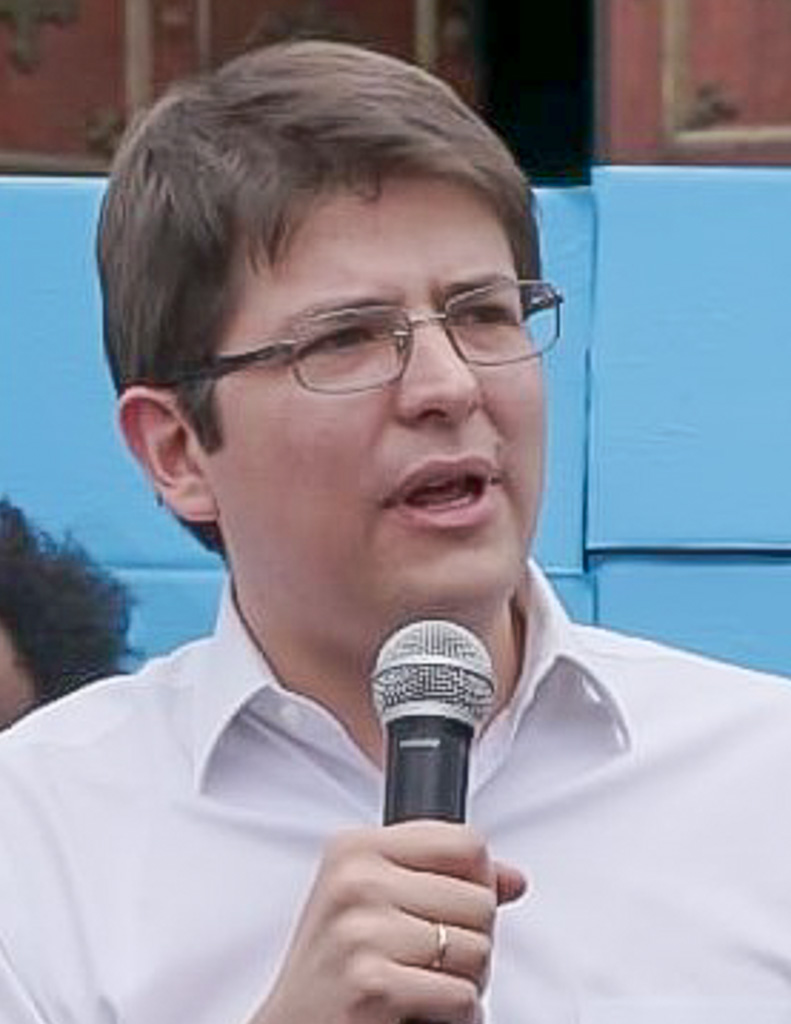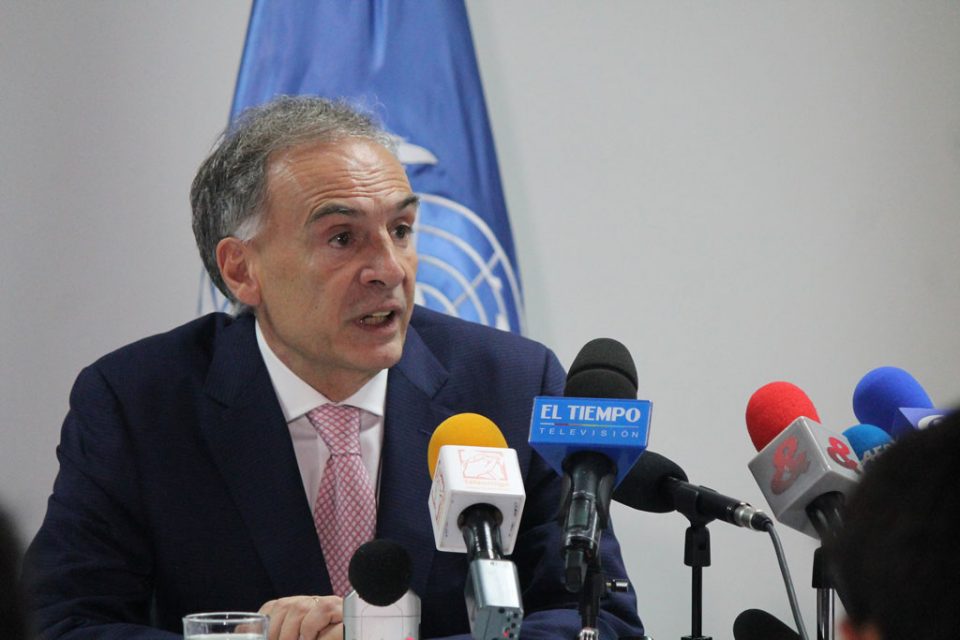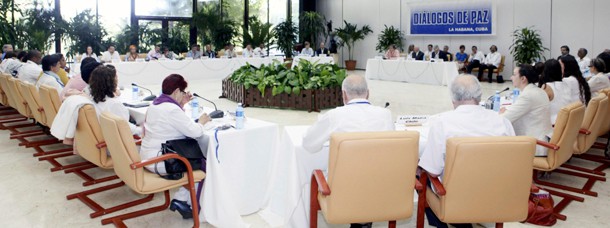
FARC and government delegations met with Colombia’s conflict victims in August, giving thise most affected by the 50 years of violence a voice for the first time since the peace talks began. Photo: farc-epeace.org
Who are the FARC?The FARC, or Revolutionary Armed Forces of Colombia, are Colombia’s largest left-wing guerrilla group and one of the main actors in the country’s decades long civil conflict. Their roots can be traced back to La Violencia, the fighting between Liberal and Conservatives that went on between 1948 and 1958. |
What just happened?The last two weeks have been the biggest hiccup in the peace process so far, but are also seen by some as a sign of its strength. The fact that negotia- tors were able to agree the release of General Alzate and return to negotia- tions is seen as a show of will on both sides. |
What are they fighting for?The FARC began as a Marxist movement depending the rights of peasant farmers and took up arms |
Previous peace talksThe last round of peace talks took place from 1999 to 2002, and resulted in the creation of a demilitarised zone in the south of the country. Many believe FARC used this zone to build strength and arms, and talks came to an abrupt end after rebels kidnapped a senator and presidential candidate Ingrid Betancourt in February 2002. |
Timeline of Events
In 2012, the FARC and Colombian government entered into peace talks in Havana, Cuba, in an attempt to bring the conflict to an end, and have been engaged in such talks ever since.
The Revolutionary Armed Forces of Colombia (FARC) are Marxist guerrillas have been fighting a protracted civil war against the Colombian government and other now-defunct groups like the right-wing paramilitaries for more than 50 years. Originally rising out of a peasant agrarian movement fighting for more equal distribution of land, the FARC over the years morphed a violent guerrilla army heavily engaged in the production and trafficking of cocaine. They have been involved in the killing of tens of thousands of people, and are considered a terrorist organisation by Colombia, the US, Canada and the European Union.
2012
Sep 4: Santos and FARC leadership announce they have signed an agreement to begin peace talks.
Sep 5: Both sides reveal the 5-item peace talks agenda: land reform, political participation, eradicating illicit drug crops, victims’ rights and compensation, and the end of the armed conflict.
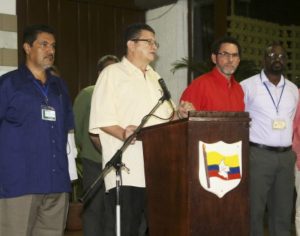
Members of the FARC negotiating team
Nov 19: Peace talks get underway officially in Havana, Cuba. As round one begins, the FARC announces a two-month unilateral ceasefire.
Dec 2: Santos sets a deadline of November 2013 for the end of the talks.
2013
Jan 14: Round 3 of negotiations begins, discussing land reform and rural development.
Feb 23: Colombian President Juan Manuel Santos threatens to abandon the peace talks with the FARC if the process does not progress.
Apr 7: Pablo Catatumbo, commander of Western Joint Command, one of the FARC’s, most elite battalions, joins the talks in Havana as a negotiator.
Apr 9: Tens of thousands of Colombians take to the streets to march in support of the peace process and mark National Victims Day.
May 26: A significant breakthrough is reached with an agreement on the first agenda item, land reform, which outlines the parameters of the so called ‘Peasant Reserve Zones’.
Jul 20: 19 army soldiers die in a FARC ambush, the biggest loss of life to military personnel since peace talks began.
Aug 21: The FARC makes its first declaration recognising its responsibility in Colombia’s armed conflict.
Aug 22: President Santos announces a plan to put any peace accord to the Colombian people in a referendum.
Aug 28: Colombia’s Constitutional Court upholds the legal framework for any peace deal with the FARC, a critical piece of legislation for any successful accord.
Oct 8: The Colombian government proposes to halt the peace talks during the 2014 electoral campaign, the FARC accept.
Nov 6: An agreement on political participation is reached, the second point topic of the 5-point peace agenda.
Nov 20: President Santos announces he will seek re-election in May 2014.
Nov 28: Discussions on illicit drug crops and drug trafficking begin.
Dec 4: The FARC calls for a truth and reconciliation commission to be formed.
Dec 15: The FARC announce they will observe a 30 day unilateral ceasefire.
2014
Jan 15: FARC ends its 30 day unilateral ceasefire.
May 16: A partial agreement is reached on illicit drugs. Both parties agree to work to eliminate all illicit drug production in Colombia if a deal is reached.
May 25: Colombians go to the polls in the first round of presidential elections.
Jun 9: FARC announces unilateral ceasefire for June 15, the day of the second round of the presidential elections.
Jun 15: President Santos re-elected in second round run-off election over right- wing contender Oscar Ivan Zuluaga.
Aug 5: Government and FARC publicly announce consensus regarding visits by groups of conflict victims to the Havana talks.
Aug 15: The first delegation of victims of Colombia’s armed conflict travels to Cuba, where they will partake in the discussions with FARC and government negotiators.
Sep 22: Santos meets UN Secretary-General Ban Ki-Moon to discuss ongoing peace talks and the fight against drug trafficking.
Sep 24: The details of the three agreements reached so far are released by both the government and FARC delegations.
Nov 3: Santos begins a five-day marathon tour of Europe, aiming to secure political and economic support for a post-conflict Colombia in the event that a peace deal is successful.
Nov 17: Santos suspends peace talks just hours after the FARC guerrillas kidnapped Brig. Gen. Ruben Dario Alzate and two others in Choco, western Colombia. Government delegation recalled from Havana.
Nov 25: FARC releases two soldiers previously captured in Arauca department after President Santos made it a condition of restarting the talks – along with the release of the captured general.
Nov 30: Brig. Gen. Alzate and to others handed over by the FARC to the International Committee of the Red Cross.
Dec 1: Brig. Gen. Alzate resigns his post, saying his actions that led to his capture damaged the integrity of the Colombian military.
Dec 3: A joint statement is issued by the two negotiating parties, saying they will resume peace talks.
Latest: Talks stalled, restarted
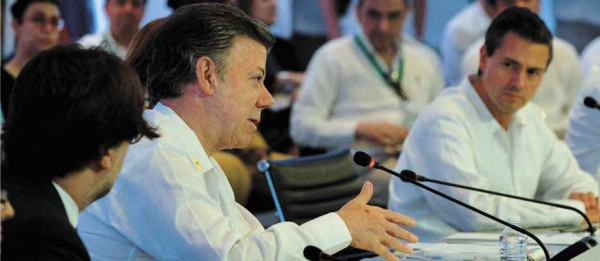
President Juan Manuel Santos suspended the peace talks after the FARC captured a top Army general in mid-November. Photo: Presidencia de Colombia.
On November 16, in the Colombian region of Choco, one of the highest ranking members of the Colombian military boardeda small boat in the capital, Quibdo, and headed up river to a small village about a 20 minutes ride away.
The trip Brigadier General Ruben Dario Alzate and two others, human rights lawyer Gloria Urrego and Cpl. Jorge Rodriguez were taking might have passed without incident. But instead, what transpired that day would make world headlines and threaten to bring the 2-year-old peace process to a screeching halt.
The general – the fourth highest ranking member of the Colombian Armed Forces – was dressed in civilian clothing and
not in his army fatigues. His companions were not part of his usual entourage of bodyguards. He didn’t have his standard-issue side arm with him, and the village they were travelling to was known FARC country.
These errors in judgment – choosing not to be accompanied by a security detail nor dress in uniform as protocol required – led he and his companions right into the hands of a guerrilla unit operating in the area.
Gen. Alzate now holds the dubious distinction of being the highest-ranking military officer ever to be abducted by the FARC, and it happened without a shot being fired.
Hours later, Colombian President Juan Manuel Santos suspended the peace talks with the rebels in Havana, Cuba.
The FARC claimed the capture was in response to increased military activity in the region. Back in September 2012, the group promised to cease kidnappings for ransom as a good-will gesture. They have since clarified that in the absence of a ceasefire, this commitment did not include military or police personnel.
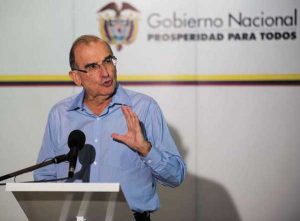
Lead government negotiator Humberto de la Calle has been at the peace talks table with the FARC the process began in 2012. Photo: Gobierno Nacional
The peace talks were a central part of President Santos’ re-election campaign in June this year. Agreements have been reached on three out of five discussion points.
Critics have condemned the decision to suspend the talks and FARC negotiator Jorge Torres Victoria, alias ‘Pablo Catatumbo’, said the FARC would require reassurances that the talks would not be unilaterally suspended again in the future.
Though Gen. Alzate and the two others with him were released on Nov. 30, 15 days after their capture, (he abruptly resigned his post the following day) the crisis will undoubtedly have ramifications for the peace process.
The FARC used the abduction as a platform for renewed requests for a bilateral ceasefire during the talks – a request that President Santos has flatly rejected in the past, and he refused to entertain the notion this time around. Still, in many quarters, support for a bilateral ceasefire is gaining momentum; Gen. Alzate’s capture would not likely have occurred under such conditions.
Lead FARC negotiator Ivan Marquez used the crisis to indicate that a similar situation could happen again in the future so long
as the two sides remain technically at war everywhere but at the negotiating table.
Santos says the only way he will agree to a ceasefire only after a peace accord is signed. This makes the idea of a scaling back of hostilities – the other proposed solution to the crisis – more realistic. There is a strong humanitarian argument for this as it would reduce further civilian deaths, as well as benefiting both sides. There have been roughly 1,000 deaths of both guerrilla fighters and soldiers since the peace talks began in November 2012.
A ‘scaling back’ of the conflict could mean FARC agreeing to restrict operations in certain areas, such as those with indigenous populations or a heavy populated areas. It could also mean the government stop fumigating crops and attacking key FARC encampments. The scaling back of hostilities could mean that the guerrillas also cease pipeline attacks, which continue to damage the country’s burgeoning oil and gas industry.
The two sides restarted the peace process last week, but it remains to be seen whether a calculated pulling back of military activities will be on the agenda.
But this idea could be complicated by the apparent discord within the Armed Forces and the Nation Police.
Colombian President Juan Manuel Santos said last Wednesday he would not tolerate “the slightest sign of disloyalty” from anyone in the military.
The warning came just one day after the recently-freed General Ruben Dario Alzate abruptly resigned from his post.
Meanwhile, on the same day Santos warned the military, Defence Minister Juan Carlos Pinzon announced he was he was purging an undisclosed number of National Police after it emerged that the FARC guerrillas were attempting to recruit police officers as informants.
But there is some positive news coming out of the whole saga. Last week Ireland pledged to give the United Nations High Commissioner $280,000 USD in aid money to help Colombians living in regions of the country most hard-hit by poverty and conflict.

